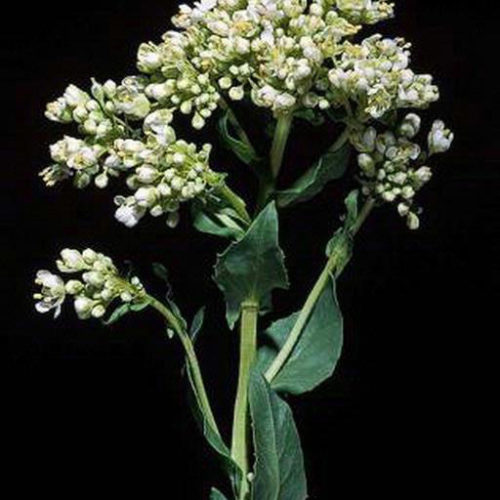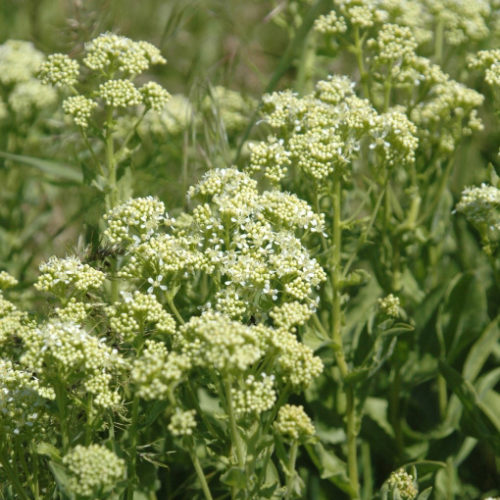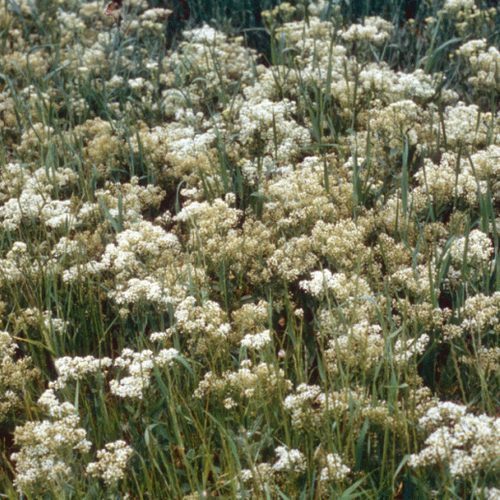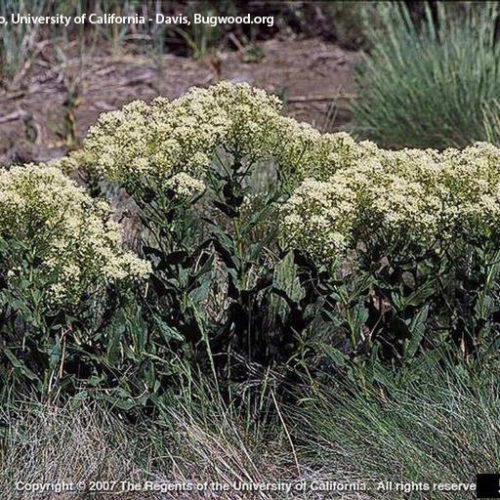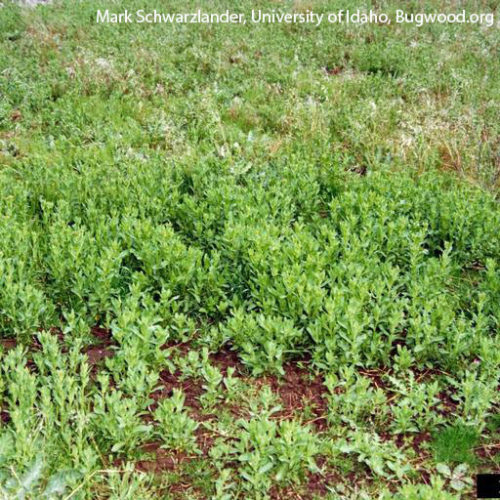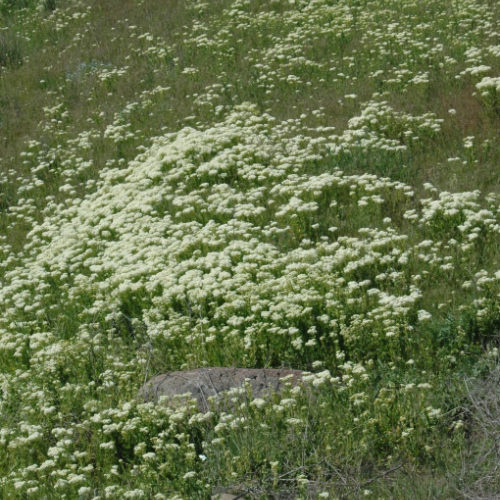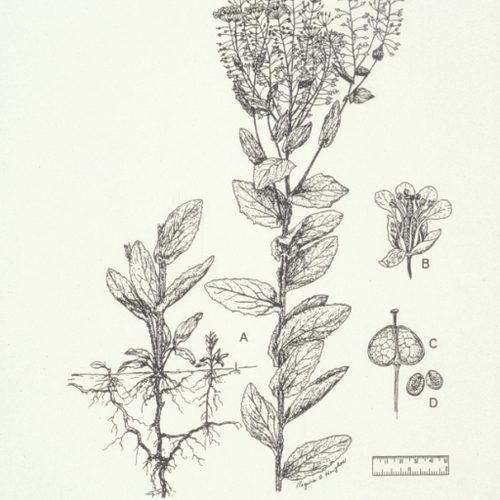Hoary Cress
Lepidium draba
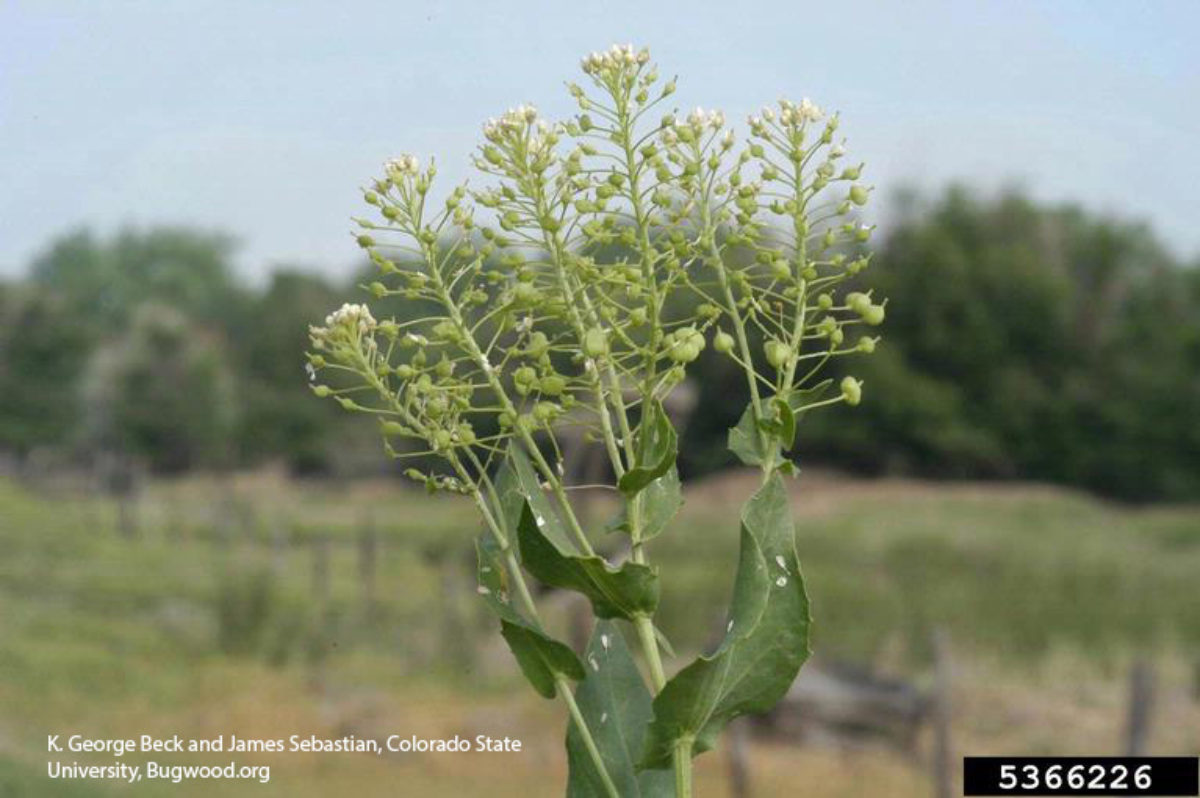
Family: Brassicaceae
Other Scientific Names:
Cardaria draba
Other Common Names: whitetop
Weed class: C
Year Listed: 1988
Native to: Europe, Asia and Northern Africa
Is this Weed Toxic?:
humans, livestock; plants may cause digestive tract irritation.
Why Is It a Noxious Weed?
Hoary cress is a highly competitive plant forming a monoculture, and once established, it easily displaces native vegetation. It has the potential to reduce the value of high-price wheat lands.
How would I identify it?
General Description
It is a rhizomatous perennial that generally grows up to around 2 feet tall, sometimes 3 feet tall. Plants generally covered in short hairs but can be hairless.
Flower Description
Plants have many somewhat flat-topped clusters of white flowers. Each flower has 4 petals and blooms April to July.
Leaf description
Leaves are alternately arranged on the stem, blue-green and lance shaped. Lower leaves have stalks while upper leaves are without stalks and have two lobes clasping the stem. Leaf margins are irregularly toothed to smooth (entire).
Stem description
Stems are upright to somewhat trailing on the ground. Stems with a lot of branching near the top.
Fruit Seed Description
Seed pods (silicles) are inflated and generally rounded to somewhat heart-shaped (especially at the base) and hairless. Seeds are dark brown and 0.08 inches (2 mm) long. One mature plant can produce 1,200 to 4,800 seeds.
May Be Confused With
Hoary cress is similar to hairy whitetop, Lepidium appelianum, another Class C noxious weed. See more images here.
Where does it grow?
It commonly grows in disturbed sites, pastures, roadsides, saline soils, and along river banks and other waterways. Please click here to see a county level distribution map of hoary cress in Washington.
How Does it Reproduce?
Hoary cress reproduces from both root fragments and seed.
How Do I Control It?
Mechanical Control
Mechanical removal is strongly discouraged. Small, broken root fragments that are left behind will form a new plant that will produce many more plants.
Herbicide Control
Please refer to the PNW Weed Management Handbook, or contact your county noxious weed coordinator.
For More Information
See our Written Findings for more information about hoary cress (Cardaria draba).
Report on hoary cress from the book "Weed Control in Natural Areas in the Western United States"
Additional images of hoary cress from eastern Washington
Spokane County NWCB Fact Sheet on hoary cress
Douglas County NWCB Fact Sheet on hoary cress
Lincoln County NWCB Fact Sheet on hoary cress
San Juan County NWCB hoary cress poster



